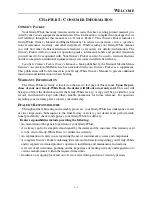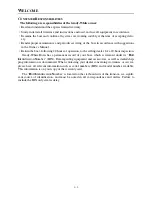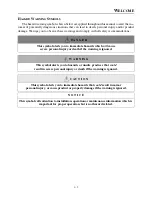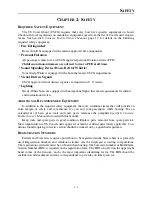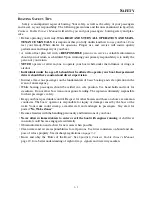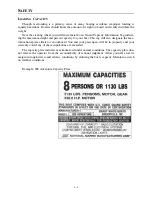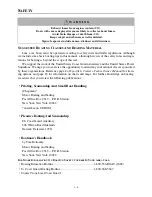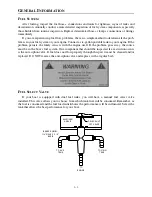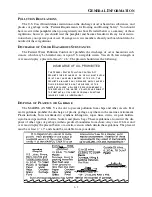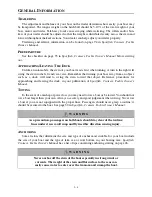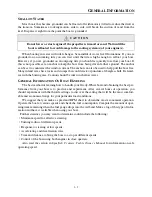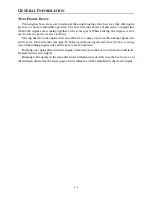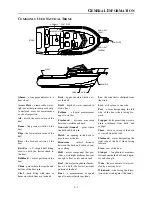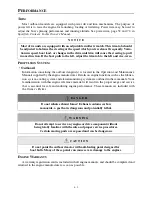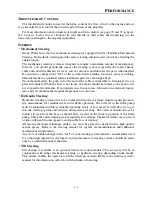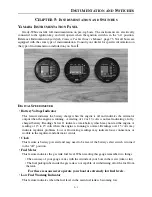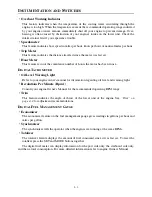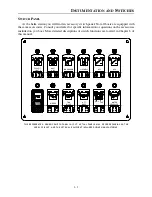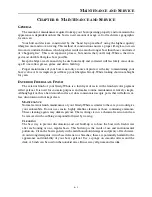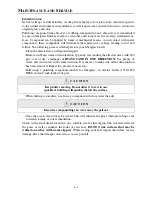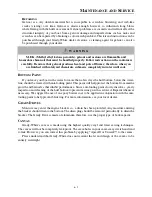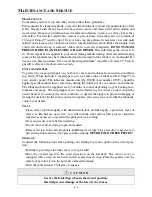
G
ENERAL
I
NFORMATION
3–5
S
HALLOW
W
ATER
Most boats that become grounded can be floated off with motor(s) tilted to reduce the draft at
the transom. Sometimes a rocking motion, side to side, will break the suction of mud from the
keel. Disperse weight from the point the boat is grounded.
When boating in water with tidal changes, be mindful of water level fluctuations. If you are
grounded on an incoming tide you can wait until the tide is high enough to refloat your boat.
However, if you are grounded on an outgoing tide you should act quickly to refloat your boat. If
this is not possible set an anchor to keep the boat from being driven farther aground. The anchor
can be set to counteract the wind or current. The anchor can also be used to help pull the boat free.
Many inland areas have rocks and stumps that could crack or puncture a fiberglass hull. Be famil-
iar with the boating area. Caution should be taken in shallow water.
G
ENERAL
I
NFORMATION
O
N
B
OAT
H
ANDLING
The best method of learning how to handle your Grady-White boat and obtaining the best per-
formance from your boat is to practice and experiment. After several hours of operation, you
should experiment with the throttle settings to discover the setting that will be the most comfort-
able and economical range for your particular load conditions.
We suggest that you make a speed and RPM chart to obtain the most economical operation.
Operate the boat at various speeds and check the fuel consumption. Compute the amount of oper-
ating time remaining when the fuel gauge drops into the red band. Make a log of this type of infor-
mation and have it available when using your boat.
Further statistics you may want to determine could include the following
:
• Minimum speed for effective steering.
• Turning radius at different speeds.
• Response to steering at low speeds.
• Accelerating and deceleration rates.
• Time and distance to bring the boat to a stop at different speeds.
• Control of the boat using both engines in close quarters.
Also read the section in
Sportfish, Cruisers, Yachts Owner’s Manual
for information on safe
operating speed.
C A U T I O N
Do not lower or start engines if the propeller is in mud or sand. Wait until the
boat is refloated to avoid damage to the cooling system(s) of your engine(s).
!
Summary of Contents for ADVANCE 257
Page 2: ......
Page 6: ......
Page 10: ......
Page 24: ......
Page 28: ......
Page 32: ......
Page 42: ......
Page 46: ......
Page 58: ...180 SPORTSMAN 8 12 LABELS AND LOCATION ...
Page 59: ...180 SPORTSMAN 8 13 LIVEWELL LAYOUT INLET OVERFLOW DRAIN TEE RIGGING PUMP TUBE ...

